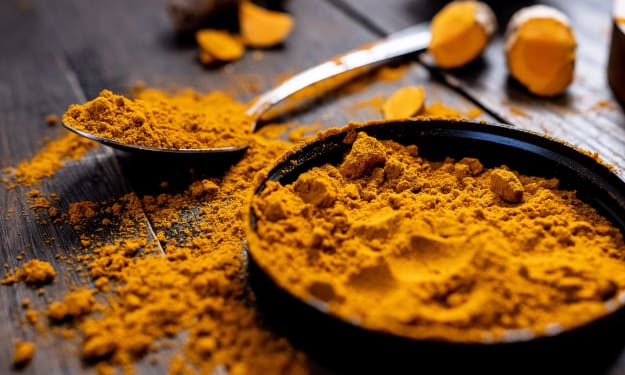
Wrinkles, those inevitable lines that form on our skin as we age, are a common concern for many individuals seeking effective treatments to combat the signs of aging. We all yearn for youthful, smooth skin that radiates vitality and confidence. While there is no magical elixir to turn back the hands of time, there are unconventional beauty treatments that show promise in reducing the appearance of wrinkles.
One such unconventional yet intriguing treatment involves harnessing the power of yogurt, a humble ingredient found in most refrigerators. Yes, you read that right! Yogurt, typically enjoyed as a delicious and nutritious snack, has been gaining attention in the skincare realm for its potential to address wrinkles.
Yogurt, a dairy product derived from fermented milk, has long been recognized for its numerous health benefits when consumed internally. However, its topical application to the skin has been discovered to offer a range of advantages as well. Packed with essential nutrients, vitamins, and minerals, yogurt possesses qualities that can contribute to achieving a more youthful complexion.
The benefits of yogurt for the skin are multifold. Firstly, yogurt is renowned for its moisturizing properties, providing deep hydration to the skin and assisting in plumping up those fine lines and creases. Furthermore, the presence of lactic acid in yogurt acts as a gentle exfoliant, helping to remove dead skin cells and promote a smoother texture. This exfoliation stimulates the skin's natural rejuvenation process, potentially reducing the visibility of wrinkles over time.
Moreover, yogurt contains probiotics, which are beneficial bacteria that support a healthy skin microbiome. A balanced and diverse microbiome is vital for skin health, as it helps strengthen the skin's natural barrier and protect against environmental stressors that can contribute to the formation of wrinkles.
As an unconventional beauty treatment, yogurt offers a natural and accessible alternative to the array of cosmetic products available in the market. It is a cost-effective option that holds potential in diminishing the appearance of wrinkles, promoting a more youthful and radiant complexion.
In the upcoming sections, we will delve deeper into the science behind yogurt's benefits for the skin and explore various ways to incorporate yogurt into your skincare routine. From homemade face masks to alternative applications, we will guide you on this exciting journey to discover the unconventional beauty treatment that yogurt has to offer for wrinkles. Get ready to unlock the transformative potential of this ordinary dairy staple and embrace a more youthful version of yourself.
Understanding Yogurt's Benefits for the Skin
Yogurt is more than just a tasty treat; it boasts an impressive nutritional profile that can benefit the skin. It is rich in essential nutrients, including probiotics, vitamins, and minerals. Probiotics are live bacteria that offer numerous health benefits when consumed and have shown potential benefits when applied topically as well. Vitamins such as vitamin B2, B5, and B12, along with minerals like zinc and calcium, contribute to the overall health and appearance of the skin.
Potential Skin Benefits of Yogurt
Moisturizing: The natural fats and proteins present in yogurt act as emollients, helping to moisturize and hydrate the skin. This can be especially beneficial for addressing dryness and minimizing the appearance of fine lines and wrinkles caused by dehydration.
Exfoliating: Yogurt contains lactic acid, a gentle alpha-hydroxy acid (AHA) that assists in exfoliating the skin. By sloughing off dead skin cells, yogurt can help reveal a fresher and smoother complexion. This exfoliation process aids in reducing the appearance of wrinkles and promoting a more youthful look.
Collagen Production: Yogurt contains certain amino acids, such as lysine and proline, which are essential for collagen synthesis. Collagen is a structural protein that provides firmness and elasticity to the skin. By supporting collagen production, yogurt may help improve skin elasticity and reduce the signs of aging, including wrinkles and sagging skin.
Lactic Acid's Role in Skin Improvement
Lactic acid, a key component of yogurt, is known for its exfoliating properties. When applied topically, lactic acid helps to gently remove the outer layer of dead skin cells, promoting cell turnover and revealing fresh, rejuvenated skin underneath. This process not only enhances skin texture but also encourages the production of new collagen and elastin fibers, which can contribute to improved skin elasticity and a reduction in the appearance of wrinkles.
Moreover, lactic acid helps to balance the skin's pH level, making it more conducive to a healthy and vibrant complexion. It also aids in diminishing hyperpigmentation and age spots, which can often accompany the development of wrinkles.
It's important to note that while yogurt offers potential benefits for the skin, individual results may vary. Factors such as skin type, sensitivity, and other skin conditions should be taken into consideration when incorporating yogurt into your skincare routine. Additionally, patch testing is advisable, especially for those with sensitive skin, to ensure there are no adverse reactions.
Preparing Yogurt-based Face Masks
Basic Yogurt Face Mask
Creating a basic yogurt face mask is incredibly simple, requiring just a few ingredients. Follow these step-by-step instructions to whip up a nourishing mask for your skin:
- Start with a clean face. Gently cleanse your skin to remove any impurities or makeup residue.
- In a small bowl, take around two tablespoons of plain, unsweetened yogurt. Opt for full-fat or Greek yogurt for added moisturizing benefits.
- Using a clean spoon or spatula, stir the yogurt to smoothen its consistency.
- Apply the yogurt evenly to your face, avoiding the delicate eye area. You can use your fingertips or a clean brush to do this.
- Leave the mask on for about 15-20 minutes to allow its nutrients to penetrate the skin.
- Rinse off the mask with lukewarm water, gently massaging in circular motions to enhance the exfoliating effect of lactic acid.
- Pat your skin dry with a soft towel and follow up with your regular moisturizer to lock in hydration.
How to Enhance the Mask with Optional Ingredients
To further enhance the effectiveness of your yogurt face mask, consider adding optional ingredients with their own unique benefits. Here are a few examples:
Honey: Add a teaspoon of raw honey to your yogurt mask. Honey is a natural humectant, helping to attract and retain moisture in the skin. It also possesses antibacterial properties and can aid in soothing inflammation and redness.
Lemon Juice: Squeeze a few drops of fresh lemon juice into the yogurt. Lemon juice contains citric acid, which can assist in brightening the skin and reducing the appearance of dark spots or hyperpigmentation.
Turmeric: Incorporate a pinch of turmeric powder into your mask for its anti-inflammatory and antioxidant properties. Turmeric can help calm the skin, reduce redness, and promote a healthy glow.
Feel free to experiment with other ingredients that cater to your specific skincare needs and concerns. Just ensure that you are not allergic to any of the added components, and remember that a little goes a long way.
Variations for Specific Skin Concerns
Yogurt-based face masks can be customized to address various skin concerns. Here are a couple of variations you can try:
Soothing Mask with Cucumber: Blend a small cucumber and mix it with yogurt to create a cooling and soothing mask. Cucumber is known for its hydrating and anti-inflammatory properties, making it ideal for calming irritated or sensitive skin.
Exfoliating Mask with Oatmeal: Combine equal parts of finely ground oatmeal and yogurt to make a gentle exfoliating mask. Oatmeal helps remove dead skin cells, unclog pores, and promote a smoother complexion.
These variations allow you to adapt the mask to suit your unique needs, whether you're looking for hydration, calming effects, or exfoliation.
Application and Usage Tips
Proper Way to Apply the Yogurt Face Mask:
To ensure maximum effectiveness and a pleasant experience, it's essential to apply the yogurt face mask correctly. Follow these steps for optimal application:
- Start with a clean and dry face. Gently cleanse your skin using a mild cleanser to remove any dirt, oil, or makeup residue. Pat your skin dry with a clean towel.
- Using clean fingertips or a brush, apply the yogurt face mask evenly to your face, avoiding the eye area. Begin by spreading a thin layer and gradually build up if needed.
- Massage the mask into your skin using gentle, circular motions. This helps stimulate blood circulation and aids in the absorption of the mask's nutrients.
- Take a few moments to relax and allow the mask to work its magic.
Duration and Frequency
The ideal duration for leaving the yogurt face mask on is approximately 15-20 minutes. During this time, the mask nourishes and hydrates the skin while the lactic acid gently exfoliates and improves skin texture. However, it's important to note that leaving the mask on for too long can lead to dryness or irritation, so avoid exceeding the recommended timeframe.
In terms of frequency, using a yogurt face mask 2-3 times a week is generally sufficient. However, every individual's skin is unique, so it's essential to observe how your skin responds. If you notice any signs of sensitivity or irritation, reduce the frequency or discontinue use.
Preparing the Skin
Preparing your skin before applying the yogurt face mask can enhance its efficacy and ensure a better overall experience. Consider the following tips:
Cleansing: Before applying the mask, cleanse your face with a gentle cleanser to remove any impurities, oil, or makeup. This allows the mask to penetrate the skin more effectively.
Exfoliation: Exfoliating the skin before using the yogurt face mask can further enhance its benefits. By removing dead skin cells, exfoliation promotes better absorption of the mask's nutrients and reveals a fresher, more radiant complexion. Choose a mild exfoliator that suits your skin type and exfoliate according to the product instructions.
Patch Test: If you're trying a yogurt face mask for the first time or incorporating new ingredients, it's advisable to perform a patch test. Apply a small amount of the mask on a discreet area of your skin, such as the inner forearm, and wait for 24 hours. If you experience any adverse reactions like redness, itching, or irritation, refrain from using the mask.
The Benefits and Results
Potential Benefits for Wrinkles
Using yogurt face masks for wrinkles can offer a range of benefits that contribute to healthier, more youthful-looking skin:
Improved Skin Hydration: Yogurt's moisturizing properties help to hydrate the skin, reducing dryness and providing a plumping effect. Hydrated skin appears smoother and can diminish the appearance of fine lines and wrinkles caused by dehydration.
Enhanced Skin Texture: The exfoliating action of lactic acid in yogurt helps to gently slough off dead skin cells, promoting a smoother and softer complexion. This can minimize the appearance of wrinkles and improve overall skin texture.
Reduced Fine Lines: Regular use of yogurt face masks may help reduce the appearance of fine lines by promoting collagen production. The amino acids present in yogurt, such as lysine and proline, support collagen synthesis, leading to firmer and more elastic skin.
Additional Benefits
Apart from targeting wrinkles, yogurt face masks can provide users with other notable benefits:
Brighter Complexion: The exfoliating action of lactic acid helps to remove dull and dead skin cells, revealing a brighter and more radiant complexion. This can give the skin a youthful glow and diminish the appearance of dullness and uneven tone.
Reduced Pigmentation: The combination of lactic acid and other optional ingredients, such as lemon juice, can help fade dark spots and hyperpigmentation. Regular use of yogurt face masks can contribute to a more even skin tone and reduce the visibility of pigmentation irregularities.
Individual Results and Consistency
It's important to note that individual results may vary when using yogurt face masks for wrinkles. Factors such as skin type, severity of wrinkles, and overall skin health can influence the outcomes. While some individuals may experience noticeable improvements in a relatively short period, others may require more time and consistent use to see visible changes.
Consistency is key when using yogurt face masks for wrinkles. Incorporating them into your skincare routine on a regular basis, typically 2-3 times a week, can yield better results over time. Patience and persistence are essential, as the benefits of yogurt face masks may accumulate gradually, leading to more significant improvements in the long run.
Remember that skincare is a personal journey, and what works for one person may not work the same way for another. It's always recommended to listen to your skin, be mindful of any potential reactions, and adjust your skincare routine accordingly.
Other Ways to Incorporate Yogurt into Skincare
In addition to using yogurt as a face mask, there are various other ways to incorporate it into your skincare routine. Consider the following suggestions:
Yogurt Cleanser: Yogurt can serve as a gentle and effective cleanser. Simply apply a small amount of plain yogurt to your face, massage it in circular motions, and rinse off with lukewarm water. The yogurt cleanser helps remove impurities, excess oil, and makeup, while also providing moisturizing benefits.
Homemade Scrubs: Combine yogurt with natural exfoliants like ground oats, sugar, or coffee grounds to create a DIY scrub. Gently massage the mixture onto damp skin to remove dead cells and reveal a smoother complexion. The lactic acid in yogurt enhances the exfoliating effect, while the moisturizing properties help prevent over-drying.
Yogurt Moisturizer: Mix a dollop of yogurt with a few drops of your favorite facial oil, such as jojoba or almond oil, to create a hydrating moisturizer. Apply this mixture to clean, damp skin, allowing it to penetrate and provide nourishment. Yogurt's moisturizing qualities combined with the benefits of the facial oil can leave your skin feeling soft and supple.
Incorporating Yogurt into Other Beauty Treatments
Yogurt can be a versatile ingredient in various beauty treatments. Here are a few ideas to explore:
Hair Mask: Apply plain yogurt to damp hair, focusing on the lengths and ends. Leave it on for about 20 minutes before rinsing thoroughly. The yogurt can help nourish and hydrate the hair, leaving it feeling softer and more manageable.
Hand and Foot Treatment: Mix yogurt with a small amount of honey and apply it to your hands and feet. Allow it to sit for 10-15 minutes before rinsing off. This simple treatment can help moisturize and revitalize dry skin, leaving your hands and feet feeling smooth and refreshed.
Sunburn Soother: If you've spent too much time in the sun and have a sunburn, applying cool yogurt to the affected areas can provide soothing relief. The yogurt's cooling properties, combined with its nutrients, can help calm the skin and reduce redness.
Remember to perform a patch test before using yogurt or any new ingredient on your skin or hair, especially if you have known allergies or sensitivities. It's also crucial to use plain, unsweetened yogurt without any added flavors or additives for the best results.
Conclusion
Incorporating yogurt as an unconventional beauty treatment for wrinkles offers several benefits for the skin. By using yogurt face masks, you can enjoy improved hydration, enhanced skin texture, and a reduced appearance of fine lines. The presence of lactic acid in yogurt gently exfoliates the skin, while its nutritional composition nourishes and promotes collagen production.
If you're seeking an effective and natural way to address wrinkles, don't hesitate to try yogurt-based masks. The simplicity and accessibility of yogurt as a skincare ingredient make it a versatile option. Experiment with different variations, such as adding honey, lemon juice, or turmeric, to customize the masks according to your specific skin concerns. Discover the transformative potential of yogurt and its ability to enhance your skincare routine.
While yogurt face masks can be beneficial, it's important to remember that individual results may vary. Consistency is key when incorporating them into your skincare routine. Regular and persistent use, typically 2-3 times a week, can yield better long-term results. However, it's always essential to listen to your skin and adjust your routine accordingly.
By embracing yogurt as an unconventional beauty treatment for wrinkles and maintaining a consistent skincare regimen, you can nourish your skin, improve its appearance, and enjoy a more youthful-looking complexion.
Remember, skincare is an ongoing journey, and finding what works best for you may involve some experimentation. Embrace the natural benefits of yogurt, explore its versatility in skincare, and enjoy the wonderful results it can bring to your skin.
Read >>> How to Use Toothpaste for Wrinkles
Note: The information provided in this blog post is for educational purposes only and should not replace professional advice. If you have specific skin concerns or medical conditions, consult with a dermatologist or healthcare professional before incorporating turmeric into your skincare routine.






Comments
There are no comments for this story
Be the first to respond and start the conversation.